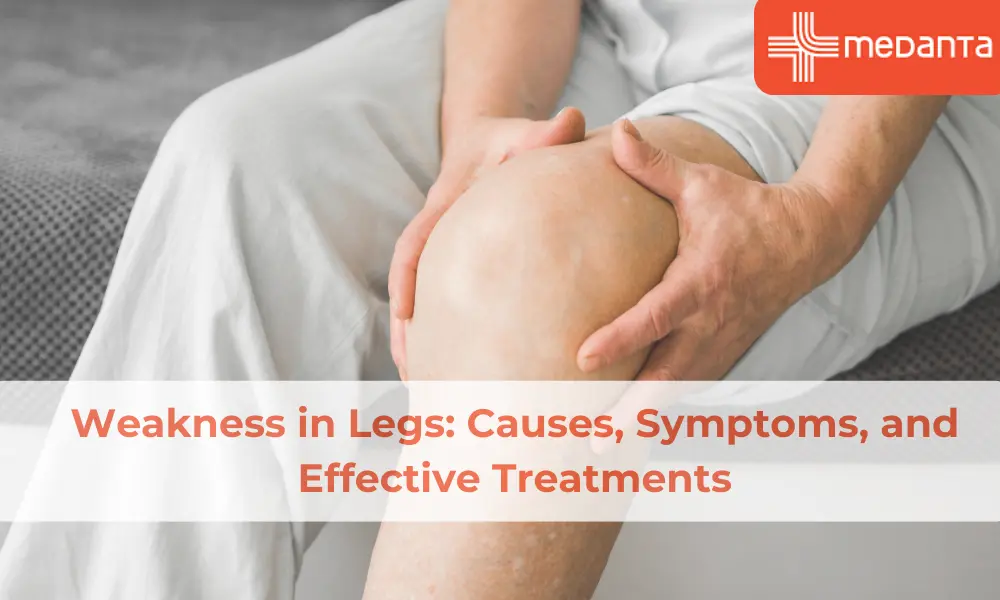What are the Common Pediatric Orthopedics Problems?

Paediatric orthopaedics is a specialised area that focuses on diagnosing and treating muscle and skeletal problems in kids. From babyhood to teenage years, kids may have different orthopaedic troubles that can influence their way of walking, leg placement, and foot shape. In this blog, we will look at four typical paediatric orthopaedic difficulties: funny walking, knock knees, flat feet, and bow legs. We'll also talk about what these conditions are, what causes them, what treatments there are, and when to go to the doctor for your kid.
Common Pediatric Orthopedics Problems
Funny Walking
Walking is a complex motor skill that children develop over time. However, some children may exhibit a funny or abnormal walking pattern that may be a cause of concern for parents. Funny walking can manifest as toe-walking (walking on the toes), in-toeing (feet pointing inward), out-toeing (feet pointing outward), or other noticeable abnormalities in gait.
There can be several reasons for children to walk funny walking in children. Muscle imbalances, joint laxity (looseness), developmental delays, or other underlying conditions can affect a child's gait. It is important for parents to observe their child's walking pattern and seek early evaluation and intervention by a paediatric orthopaedic specialist if they notice any abnormalities.
The treatment for funny walking depends on the underlying cause. Physical therapy may be recommended to address muscle imbalances and improve gait abnormalities. Orthotic devices, such as shoe inserts or braces, may be prescribed to provide support and correct alignment. In some cases, exercises, and activities to strengthen the muscles and improve coordination may be recommended. Early intervention and appropriate treatment can help correct funny walking and ensure proper development of a child's gait.
Knock Knees
This condition is also called genu valgum. It is a condition where the knees angle inward, causing the ankles to touch while the knees are apart. Knock knees are common in young children, typically between the ages of 2 to 4 years, and are usually a normal part of development. Most children outgrow knock knees by the age of 6 years without any medical intervention.
However, in some cases, knock knees may persist beyond the typical age and may require medical attention. Persistent knock knees can be caused by various factors, including genetics, metabolic or hormonal disorders, and obesity. If knock knees are persistent and causing pain or discomfort, or if they are associated with other symptoms, consult a paediatric orthopaedic specialist for evaluation.
Knock knees treatment depends on the cause and seriousness of the condition. In most cases, observation and monitoring may be recommended, as knock knees tend to improve as children grow. Physical therapy may be prescribed to strengthen the muscles around the knees and promote proper alignment. Orthotic devices, such as braces, may be used to provide support and correct the knee alignment.
Flat Feet
This is a condition where the feet arches are lower than normal, causing the entire sole of the foot to touch the ground when standing. Flat feet are common in infants and young children and are usually a normal variant of foot development. Most children with flat feet do not require treatment, as the condition tends to resolve on its own as they grow.
There are 2 kinds of flat feet: flexible flat feet and rigid flat feet. Flexible flat feet are the most common and usually do not cause pain or discomfort. They are typically flexible, and the arches may reappear when the child stands on their toes. Rigid flat feet, on the other hand, are less common and may cause pain and discomfort, as the arches do not reappear when the child stands on their toes.
The treatment for flat feet depends on the type and severity of the condition. Flexible flat feet usually do not require any medical intervention and can be managed with observation and monitoring. However, if the child experiences pain or discomfort, physical therapy may be recommended to strengthen the muscles of the feet and promote proper foot alignment.
Bow Legs
Bow legs is an illness where the legs curve outward, causing the knees to be apart while the ankles touch when standing with the feet together. Bow legs are common in infants and young children, usually between the ages of 1 to 2 years, and are typically a normal part of development. Most children outgrow bow legs by the age of 3 to 4 years without any medical intervention.
However, in some cases, bow legs may persist beyond the typical age and may require medical attention. Persistent bow legs can be caused by various factors, including genetics, metabolic or hormonal disorders, and vitamin D deficiency. If bow legs are persistent and causing pain or discomfort, or if they are associated with other symptoms, it is important to consult a paediatric orthopaedic specialist for evaluation.
The treatment for persistent bow legs depends on the underlying cause and severity of the condition. In most cases, observation and monitoring may be recommended, as bow legs tend to improve as children grow. Vitamin D supplementation may be prescribed if vitamin D deficiency is suspected. Physical therapy may be prescribed to strengthen the muscles around the knees and promote proper alignment.
Conclusion
Paediatric orthopaedic problems, such as funny walking, knock knees, flat feet, and bow legs, are common conditions that may affect children's gait, leg alignment, and foot structure. While most of these conditions are a normal part of development and tend to improve with time, persistent or symptomatic cases may require medical intervention.
Want to ensure the best future for your kid? Get in touch with a Paediatric Orthopaedic Expert at Medanta Medicity Hospital Today!






